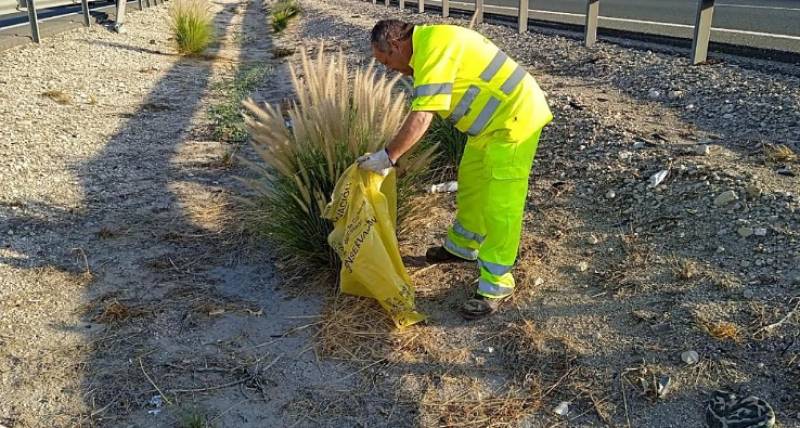- Region
- Águilas
- Alhama de Murcia
- Jumilla
- Lorca
- Los Alcázares
- Mazarrón
- San Javier
-
ALL AREAS & TOWNS
- AREAS
- SOUTH WEST
- MAR MENOR
- MURCIA CITY & CENTRAL
- NORTH & NORTH WEST
- TOWNS
- Abanilla
- Abarán
- Aguilas
- Alamillo
- Alcantarilla
- Aledo
- Alhama de Murcia
- Archena
- Balsicas
- Blanca
- Bolnuevo
- Bullas
- Cañadas del Romero
- Cabo de Palos
- Calasparra
- Camping Bolnuevo
- Campo De Ricote
- Camposol
- Canada De La Lena
- Caravaca de la Cruz
- Cartagena
- Cehegin
- Ceuti
- Cieza
- Condado de Alhama
- Corvera
- Costa Cálida
- Cuevas De Almanzora
- Cuevas de Reyllo
- El Carmoli
- El Mojon
- El Molino (Puerto Lumbreras)
- El Pareton / Cantareros
- El Raso
- El Valle Golf Resort
- Fortuna
- Fuente Alamo
- Hacienda del Alamo Golf Resort
- Hacienda Riquelme Golf Resort
- Isla Plana
- Islas Menores & Mar de Cristal
- Jumilla
- La Azohia
- La Charca
- La Manga Club
- La Manga del Mar Menor
- La Pinilla
- La Puebla
- La Torre
- La Torre Golf Resort
- La Unión
- Las Palas
- Las Ramblas
- Las Ramblas Golf
- Las Torres de Cotillas
- Leiva
- Librilla
- Lo Pagan
- Lo Santiago
- Lorca
- Lorquí
- Los Alcázares
- Los Balcones
- Los Belones
- Los Canovas
- Los Nietos
- Los Perez (Tallante)
- Los Urrutias
- Los Ventorrillos
- Mar De Cristal
- Mar Menor
- Mar Menor Golf Resort
- Mazarrón
- Mazarrón Country Club
- Molina de Segura
- Moratalla
- Mula
- Murcia City
- Murcia Property
- Pareton
- Peraleja Golf Resort
- Perin
- Pilar de la Horadada
- Pinar de Campoverde
- Pinoso
- Playa Honda
- Playa Honda / Playa Paraíso
- Pliego
- Portmán
- Pozo Estrecho
- Puerto de Mazarrón
- Puerto Lumbreras
- Puntas De Calnegre
- Region of Murcia
- Ricote
- Roda Golf Resort
- Roldan
- Roldan and Lo Ferro
- San Javier
- San Pedro del Pinatar
- Santiago de la Ribera
- Sierra Espuña
- Sucina
- Tallante
- Terrazas de la Torre Golf Resort
- Torre Pacheco
- Totana
- What's On Weekly Bulletin
- Yecla


- EDITIONS:
 Spanish News Today
Spanish News Today
 Alicante Today
Alicante Today
 Andalucia Today
Andalucia Today
Date Published: 18/11/2025
The unstoppable weed taking over roadsides in the Region of Murcia
Fountain grass is spreading through Murcia at an alarming rate, increasing wildfire risks and hindering drivers and cyclists

If you've been driving around the Region of Murcia lately and noticed what looks like an absolute explosion of feathery grass taking over roadsides, ditches, bike lanes and pretty much any available gap in the pavement, you're certainly not alone. The Region is being invaded by Pennisetum setaceum, commonly known as fountain grass, and it's become such a widespread problem that the local authorities are now calling it an environmental crisis.
This invasive plant, which originally comes from northeast Africa, is causing serious issues for biodiversity, road safety and local council budgets. It's popping up everywhere from main roads to protected natural areas, and the spring and autumn rains have only made things worse by giving it the perfect conditions to spread like wildfire.
The plant was first introduced to the Region of Murcia in the early 2000s in a commercial area of El Puntal in Murcia city. Since then, it's been on an unstoppable march across the Region. According to sources from the Ministry of Transport, fountain grass is now present on practically every dual carriageway and motorway.
Only the A-33, CT-33, CT-34 and the A-30 from Blanca to Albacete have been spared so far.
What makes this weed such a nightmare to deal with is its extraordinary ability to reproduce and spread. Like pampas grass, it's included in the Spanish Catalogue of Invasive Alien Species. Both plants reproduce through thousands of seeds that are easily dispersed by the wind, giving them the capacity to scatter across huge areas of land.
They modify the landscape and compete with native species in the ecosystems they invade, pushing out plants that should naturally be there.
Rubén Vives, spokesperson for Ecologists in Action, warns that fountain grass is particularly problematic because it has a great capacity for regeneration after being cut or burned. That makes it incredibly difficult to get rid of once it's established. The plant reaches more than a metre in height with numerous feathery leaves and the really worrying bit is that it's highly flammable. That implies a serious risk of fire, especially during summer months.
 From a road safety perspective, the plant is becoming a genuine hazard. It sprouts and grows in roadside ditches where it reduces visibility and encroaches on bike lanes. It pops up in any gap in the road or footpath. Drivers are finding their sightlines blocked and cyclists are being squeezed into narrower lanes as the grass creeps outward.
From a road safety perspective, the plant is becoming a genuine hazard. It sprouts and grows in roadside ditches where it reduces visibility and encroaches on bike lanes. It pops up in any gap in the road or footpath. Drivers are finding their sightlines blocked and cyclists are being squeezed into narrower lanes as the grass creeps outward.Removing fountain grass is far from straightforward, which is why local councils are struggling to keep on top of it. Murcia City Council has implemented a special protocol for control and eradication, but the process is labour intensive and expensive.
The weed has taken over the old N-340 in Monteagudo, the Costera Norte area and Juan Carlos I and Juan de Borbón avenues in Murcia. In Molina de Segura, it's also described as a plague.
Last year, a large scale clearing operation was carried out across various parts of the municipality, with the road connecting Molina de Segura with Murcia brought up to standard. In 2026, there will be a new roadmap with actions from the Department of Public Works to continue tackling this invasive weed on the main roads.
Whether such a comprehensive plan will materialise remains to be seen, but what's clear is that fountain grass isn't going anywhere on its own. But without a proper effort to bring the weed under control, this invasive species will continue to spread, costing more money, damaging biodiversity and creating safety hazards across the Region.
Also of interest: Why Spain plants oleander trees in the middle of motorways
Images: Mitma/Freepik










